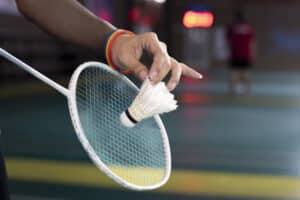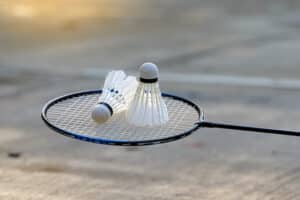Is it Worth Restringing a Squash Racket?
Key Takeaways
- Restringing a squash racket offers numerous benefits for players, including improved performance, increased durability, and customization options.
- Regular restringing helps maintain the optimal tension of the racket strings, allowing for better power, control, and feel during gameplay.
- Experts recommend restringing a squash racket at least twice a year, with more frequent players restringing at least three times a year for optimal performance.
Restringing a squash racket is a topic that often sparks debate among players. Some argue that it is an essential maintenance practice, while others question its necessity and cost. In this article, we will explore the benefits of restringing a squash racket and weigh the factors that determine its worth. By examining various expert opinions and research, we aim to provide a comprehensive answer to this question.
The Benefits of Restringing
Restringing a squash racket offers numerous benefits that can significantly impact a player’s performance and overall experience on the court. Let’s take a closer look at these advantages:
1. Improved Performance
Over time, racket strings lose their elasticity and tension, resulting in reduced power and control. Restringing ensures that the strings are at their optimal tension, allowing for better power, control, and feel during gameplay. It restores the racket to its peak performance, enabling players to hit accurate shots with confidence.
2. Increased Durability
Squash racket strings undergo significant wear and tear with regular use. Restringing the racket regularly helps maintain the durability of the strings and extends their lifespan. By replacing worn-out strings, players can enjoy a more responsive racket that retains its resilience and effectiveness for longer periods.
3. Customization
Restringing allows players to select the best squash string to suit their playing style. Factors such as string tension, gauge, and construction can be adjusted to optimize performance and provide a competitive advantage. Whether you prefer a softer string for enhanced touch or a stiffer one for increased power, restringing allows you to tailor the racket to your individual preferences.
4. Consistency
By restringing regularly and keeping records of the selected string type and tension, players can maintain peak performance consistently. This allows for better consistency in gameplay and reduces variables that may affect performance. Restringing at regular intervals ensures that the racket performs consistently, enabling players to adapt and improve their skills with greater ease.
Frequency of Restringing
The frequency of restringing a squash racket depends on several factors, including playing frequency and personal preference. While there is no set rule, experts recommend restringing at least twice a year for optimal performance. Frequent players, engaging in the sport three or more times per week, should consider restringing their racket at least three times a year. Less frequent players should still aim to restring their racket at least a couple of times annually to maintain its performance.
Cost Considerations
The cost of restringing a squash racket can vary significantly. On average, it can start from around £15 or $30, depending on the string type and the service provider. While this cost may seem expensive compared to the initial investment in a new racket, it is essential to consider the benefits restringing offers. Restringing can improve the performance and lifespan of your existing racket, saving you money in the long run.
Conclusion
Restringing a squash racket is worth the investment for players who are serious about their performance and want to maintain their equipment’s longevity. The benefits of restringing, such as improved performance, increased durability, customization options, and consistency, outweigh the cost and effort involved. By restringing at regular intervals, players can maximize their playing potential, adapt to different game situations, and enjoy a more satisfying experience on the court.
Related Websites:
FAQs:
Q: What is the process of restringing a squash racket?
Restringing a squash racket involves removing the old strings, choosing the appropriate string tension, and installing new strings.
Q: How can I tell if it’s time to restring my squash racket?
Signs that it might be time to restring your squash racket include loss of tension, visible fraying or damage, and reduced power and control during gameplay.
Q: What are the benefits of restringing a squash racket?
Restringing a squash racket can lead to improved performance with restored power and control, enhanced accuracy and consistency, as well as extended racket lifespan by preventing further damage to the racket frame and maintaining optimal string tension for longer.
Q: What factors should I consider before restringing my squash racket?
Before restringing your squash racket, consider factors such as the frequency of play (regular players may need more frequent restringing), skill level and playing style (advanced players may require higher string tensions), and personal preferences.
Q: What is the average cost of restringing a squash racket?
The average cost of restringing a squash racket can vary depending on factors such as string materials and labor costs. It is recommended to check with local sports stores or racket restringing services for specific pricing.






